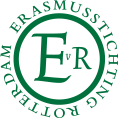Dave Lordan

Dave Lordan
Meaning well is as great a quality as it is a common failing in poets, and Dave Lordan is to be encouraged in his avoidance of it. His two collections to date, The Boy in the Ring (2007) and Invitation to a Sacrifice (2010) are enjoyably bad-minded. The former covers much expected first-collection matter: childhood, family history, adolescence, social dynamics in small communities. Lordan’s interest in violence, deprivation and loss is not unusual in Irish writing, but his truthfulness is. Those subjects do not figure in his poems as tokens of authenticity, but something like the reverse. The characters of The Boy in the Ring are trapped in a ghastly revue, performing lives that reflect the inauthenticity of capitalism; their inchoate, usually drunken, attempts at dissent are punished with all the brutality that small towns and small minds have to offer. Lordan’s radicalism is somewhat poorly served by the collection’s structural narrative, however, which is a fairly conventional coming-of-age arrangement, augmented by the motif of encircling hostility figured in the ‘ring’ of the title.
Invitation to a Sacrifice is more ambitious, reflecting Lordan’s evolution as performer and writer. The prologue, ‘From the Museum of Pre-Cinema’, engages immediately with ideas of performance, while the eponymous poem is a manifesto for morally engaged poetics filmed exploitation-style by Breughel the Elder. The fourth section of Invitation, ‘The Methods of the Enlightenment’, is worthy of particular attention. A series of short prose pieces narrated by ‘Vade Nadrol’, it works as the collection’s thematic mixing-desk. One of these stories, ‘C Section’, is a blackly hilarious account of Vade’s encounter with a hunger striker variously named Body Songs, Boggy Sons, Bouncy Slums and Bonny Slings. The hunger striker is the exemplar of the body emptied of substance in order to be filled with political meaning. B-S resonates with all of the bodies in Invitation which have forced to mean something other than themselves. But that meaning is in itself unstable, as shifting as the name assigned to the martyr.
Selfhood, and the ability to enunciate it, can be represented by the confrontation of two interrelated and opposing acts: sacrifice, and artistic creation. Sacrifice, codified into religion, prohibits the dissolution of self in bliss, producing myth and eventually, scientific knowledge. The very fact that these creative disciplines exist, however, suggests the role of art – especially the arts of the body: poetry, music, dance, theatre – in continually reintroducing the possibility of ecstasy. To the extent that art is not madness or complete synthesis with nature, however, it continually accepts the regulatory role of sacrifice. Invitation to a Sacrifice enacts that basic face-off between sacrifice and art. It’s a vital Baedecker with which to negotiate the lunar landscape of 2010s Ireland, its many nuances and subtleties unexpected in a performer who has been compared to a natural disaster. Most important, however, it teaches us to recognise homo lordaniensis in his natural habitat, and warns us that he does not, above all, mean well to any remaining sapiens.
The Boy in The Ring, Salmon Poetry, The Cliffs of Moher, 2007
Invitation to a Sacrifice, Salmon Poetry, The Cliffs of Moher, 2010
Links
Lordan on the Salmon website
Editorial statment by Lordan for The Stinging Fly
The Abyss Staring Back: An Essay by Lordan on Art and Politics
Sponsors
























